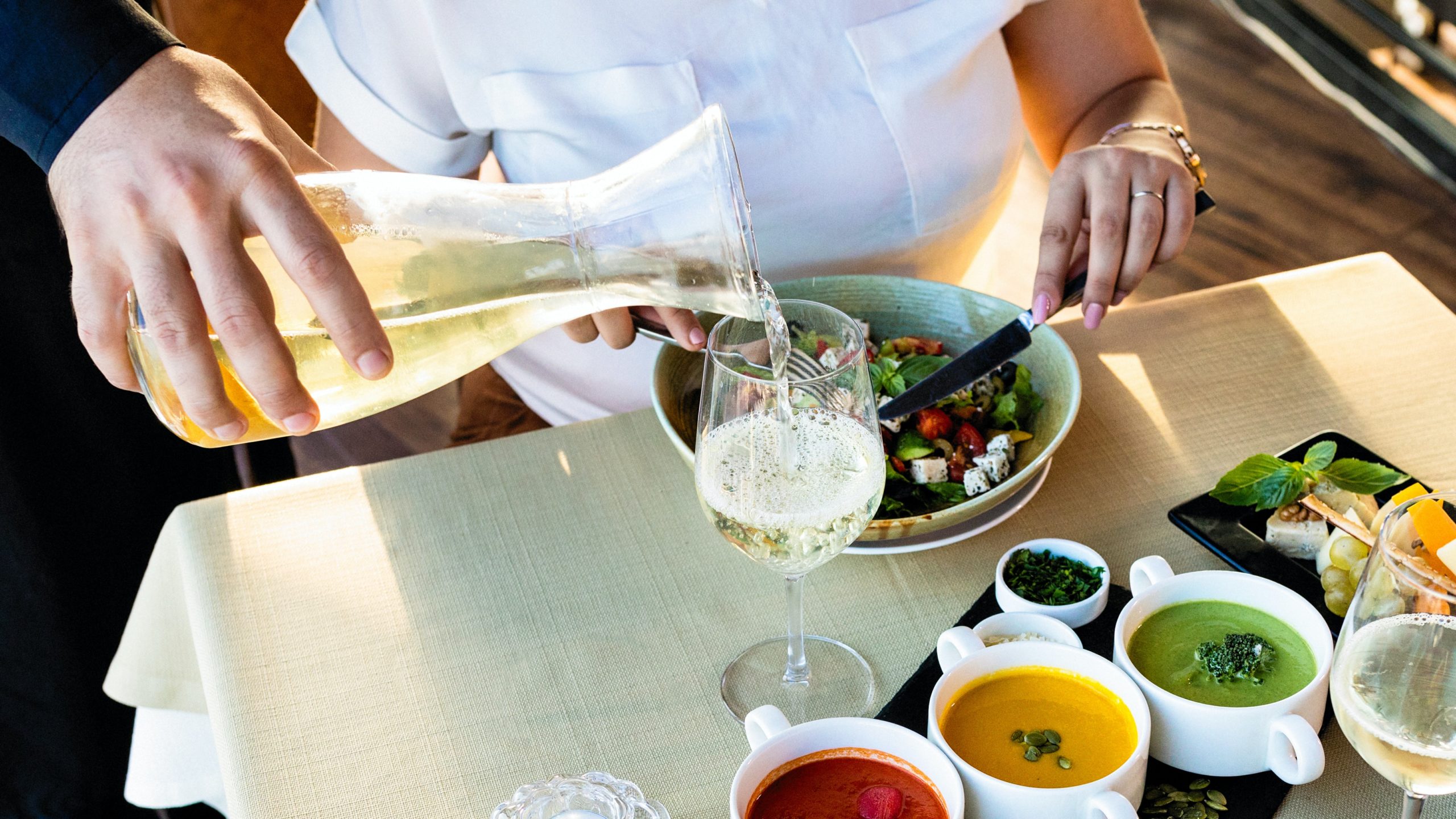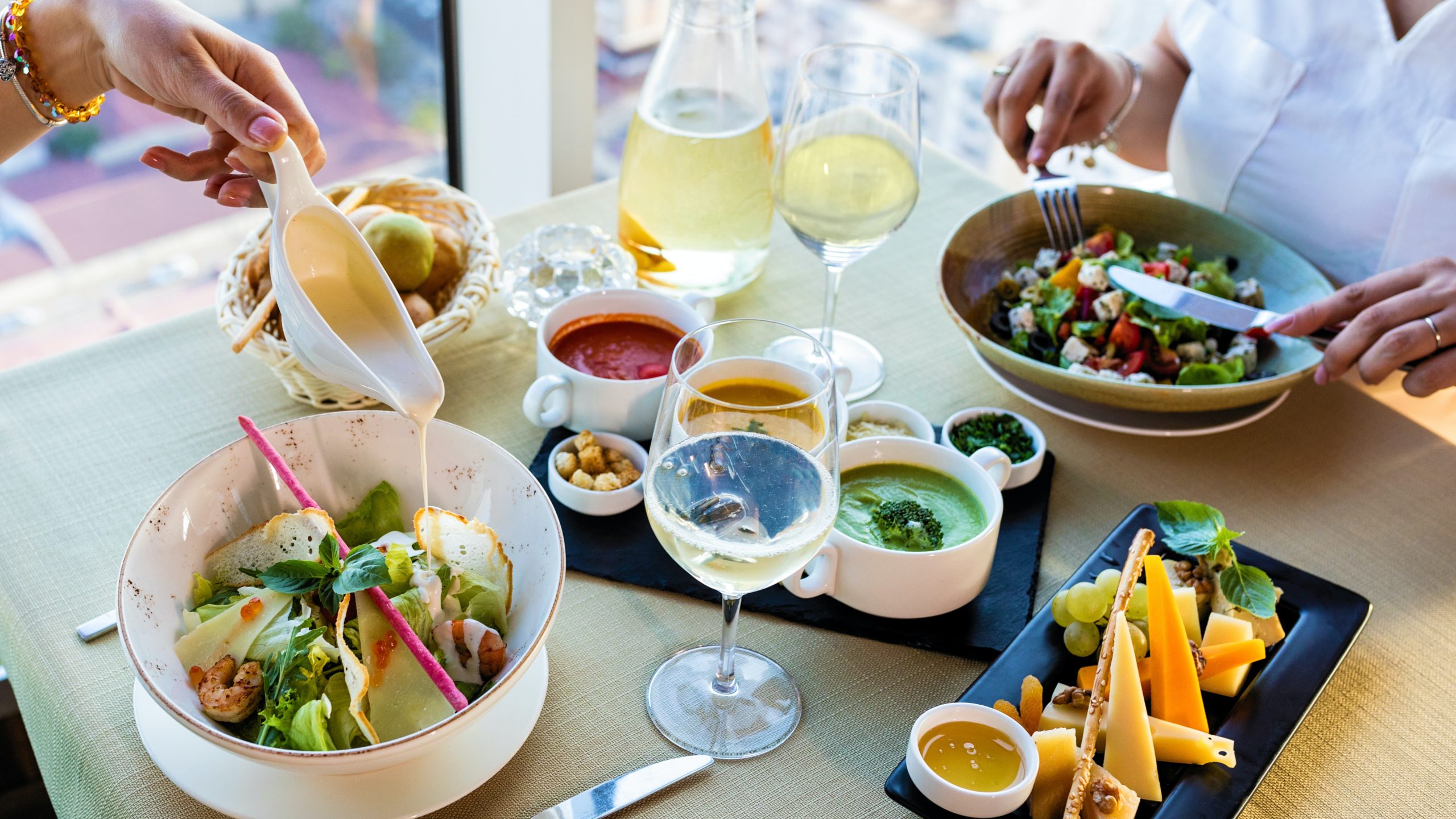Choosing the right white wine for cooking is an essential step in making delicious meals. You’ll be using your finest ingredients, and the right wine can enhance the flavor of your dishes. Listed below are some tips on which white wine is best for cooking. Read on to learn more. You’ll be surprised at how easy it is to make your dishes sing! An excellent white merlot or pinot grigio will complement your meal perfectly.
Choosing the right white wine for cooking is not as difficult as you might think. The key is finding a wine with a neutral taste and complementing different flavors. You can select a wine with a 12.5% ABV or higher, which will complement your dish. This is the most versatile type of white wine for cooking. While this variety isn’t a traditional cooking wine, it does blend well with many types of ingredients.
White Wine Cooking Tips
- Deglazing a Pan Remove any browned onions, garlic, or meat from the pan and add a splash of white wine to the pan. Scrape the bits of caramelized food from the bottom of the pan with the end of a wooden spoon or spatula and continue with the procedure. Garlic Shrimp Pasta is a light, tasty, and oh-so-easy recipe highlighting the deglazing phase.
- Adding a splash of dry sherry to a skillet with fish or seafood and herbs will allow the wine to enhance the delicate tastes. It’s fantastic! Alternatively, try steaming mussels with garlic and white wine!
- In a sauce, deglaze the pan with wine, then whisk in broth, stock, or cream, along with a pat or two of butter, until the wine has reduced to a syrupy consistency. Reduce to desired consistency by adding preferred seasonings. Any white wine sauce, such as this Lemon Shrimp Linguine, will go well with pasta.
- Cooking with wine may be just as delightful as drinking it straight as if you needed another reason to enjoy it. A dry, crisp white wine is the ultimate component that can elevate an everyday dish into a great supper, even though not all “cooking wine” is made equal.
- White wines can be acidic, sharp, sour, or sweet, and the appropriate one can give your food a well-balanced flavor while also clearing the palate of overly rich elements. Dry wine is excellent for savory foods. Avoid sweet white wines like Riesling, Moscato, and Sauternes when cooking.
- White wines are typically used to give poultry, fish, shellfish, and dairy items acidity. They’re also great for deglazing a skillet after cooking meat, onions, garlic, mushrooms, and other vegetables. However, be sure to select the appropriate type.
What Is The Best White Wine For Cooking?
7 Best White Wines For Cooking
1. Sauvignon Blanc
You can’t go wrong with Sauvignon Blanc when it comes to white wine for cooking. This white’s noticeable acidity and herbal aromas will lend depth and zest to everything from excellent Italian risotto to steamed mussels with garlic toasts, making it arguably the most adaptable vino for marinades, seafood meals, and vegetables. There are plenty of white wines to experiment with within the kitchen, from zesty Sauvignon Blanc and refreshing Pinot Grigio to dry Riesling and crisp sparkler. So, what do you have to lose? It’s time to get to work on the kitchen.
2. Pinot Grigio
This white equivalent to Pinot Noir pairs well with a range of foods thanks to its crisp and refreshing flavor. It may be used to brighten up veggie-centric dishes such as vegan cauliflower scampi in a lemon garlic white wine sauce and light pasta dishes. Whites like Pinot Gris, Semillon, and Sauvignon Blanc complement heavy cream, butter, and strong-flavored cheeses like Monterey Jack, Gruyere, and Parmesan. Unoaked Chardonnay is ideal for delicate meals such as Mushroom Risotto and Seared Scallops in Lemon Wine Sauce.
3. Chardonnay
When it comes to Chardonnay, choose unoaked varieties that will not grow overly heavy or bitter as they age. A non-oaky variation, like this tarragon chicken with Chardonnay cream sauce, will balance acidity and enhance the rich flavors of cream sauces.
4. Vermouth (dried)
While high-alcohol wines, such as fortified wines, aren’t recommended for cooking in general, there are always exceptions. Take, for example, dry white vermouth. This aromatic, slightly bitter choice isn’t just for martinis; it’s also great with light proteins like shellfish, chicken, and elephant garlic-roasted pork loin. Because of the fortification, Vermouth has a lengthy shelf life.
5. Riesling, dry
While many of the most well-known Rieslings are late-harvest varietals (meaning the grapes were collected later in the growing season and so are sweeter), if you’re planning to cook with it, you may always go for a dry Riesling. The high acidity will provide velvety chicken a tangy counterpoint and won’t dominate seafood recipes.
6. Marsala wine
Marsala wine is a go-to for recipe-friendly vinos and is one of the most well-known cooking wines. It’s even been given its dish Chicken Marsala! This Italian wine is not just the name of the world’s most renowned chicken and mushroom meal, but it’s also a great accompaniment to other cream-based dishes like mushroom gnocchi. Only use “secco” Marsala, which is the driest form available.
7. Champagne
Remember how we mentioned there’s no need to spend a lot of money on a nice bottle of wine if you’re going to cook with it? That advice still holds; therefore, we refer to any dry sparkling wine when saying Champagne. More than simply for sipping, sparkling wine may be used in various recipes for breakfast, lunch, and dinner.
A Substitute For White Wine
Red wine types are the most excellent substitute for white wine in cooking, but there are a few other options if you don’t have any on hand or have a wine allergy. There are two reasons why wine is used in cooking, and understanding both might help you discover an appropriate substitute.
The sugar in wine breaks down while cooking and sweetens a meal without becoming overpowering, so chefs employ it in their cooking. The fact that it is used to add tastes is a secondary factor. You may quickly enhance the flavor of food by using a combination of herbs, spices, broth, and stock.
Tips For Selecting The Best Dry White Wine
Here’s what you should (and shouldn’t) do when cooking with wine:
- Choose a dry wine with a lot of acidity and citrus notes: Unless you’re making a dessert, don’t use sweet wines. (They’ll intensify the sweetness.) A crisp white wine with mild fruit aromas, particularly citrus, can complement savory dishes.
- Select a wine with a relatively low alcohol content: To avoid overwhelming your cuisine with an alcoholic flavor, stick to low-alcohol white wines (under 12.5 percent ABV).
- Avoid oaky whites in general because they might overwhelm the dish and leave a sour aftertaste (think oaked Chardonnays).
- Don’t waste your money: There’s a good reason why a bottle of white wine for cooking shouldn’t cost a lot of money. The heat evaporates most of the alcohol and eliminates the nuanced nuances that a more expensive wine should have. It’s best to save your money for bottles you’ll drink and enjoy by yourself.
Dessert Recipes Using White Wine
This will most likely be the only occasion white wine will be served “raw,” with the alcohol still present. Riesling, Sauterne, Moscato, and Lambrusco are all great when soaked into angel food cake and topped with strawberries and whipped cream. Use fresh oranges and a sparkling Moscato to make a delightful drink. White wine pastries, white wine granita, and white wine sorbet are always beautiful delights.
Is It True That white Wine Is Beneficial For You?
Aside from calories, your glass of white is chock-full of antioxidants, thanks to phenolic components that aid in the battle against oxidative stress. When it comes to stress, a glass of white wine, a table full of friends, and some fresh air can all help to lower stress hormones and keep you healthy. Drinking this amount of wine in moderation has been linked to health advantages, but drinking more than that can be harmful to your health.
Is It True That White Wine Has Anti-Inflammatory Properties?
White wine has fewer polyphenols than red wine. Still, it does include simple phenols (Tyr, OH-Tyr, and caffeic acid), which have been linked to antioxidant and anti-inflammatory effects in vitro and humans, despite their low plasma concentrations after white wine consumption. When your body metabolizes alcohol in the GI tract, it can cause tissue homeostasis to be disrupted. The intestines may become inflamed for a long time due to this. Alcohol can also induce arthritis, which is inflammation of the joints.
Conclusion
A good cooking wine should be delicious on its own, and it should be both inexpensive and good-tasting. When it comes to selecting a white wine for cooking, the only important thing is to choose the right type. In most cases, a recipe calls for less than half a bottle, so you can use a wine that tastes great on its own. A sour wine will overpower your dish and make it unappealing. The best white wine for cooking is a neutral one with a low ABV, which is the alcohol content of a glass of wine. If the wine is too rich, it will make the dish taste bitter. Ina Garten’s recipe calls for a dry white wine. Hence, it’s recommended to use a dry white wine for cooking. A moderately-priced bottle of this type is ideal for almost any recipe.


